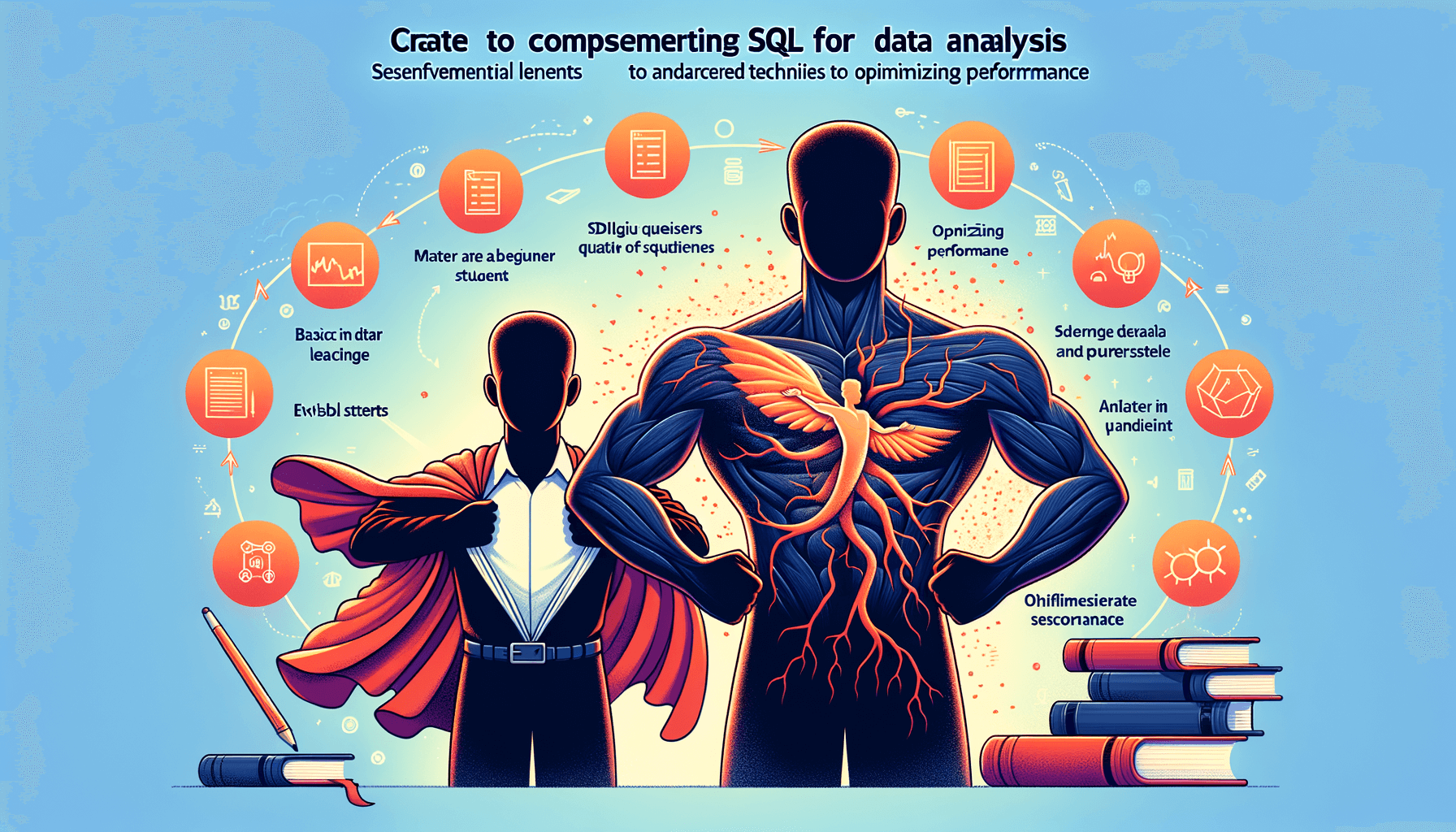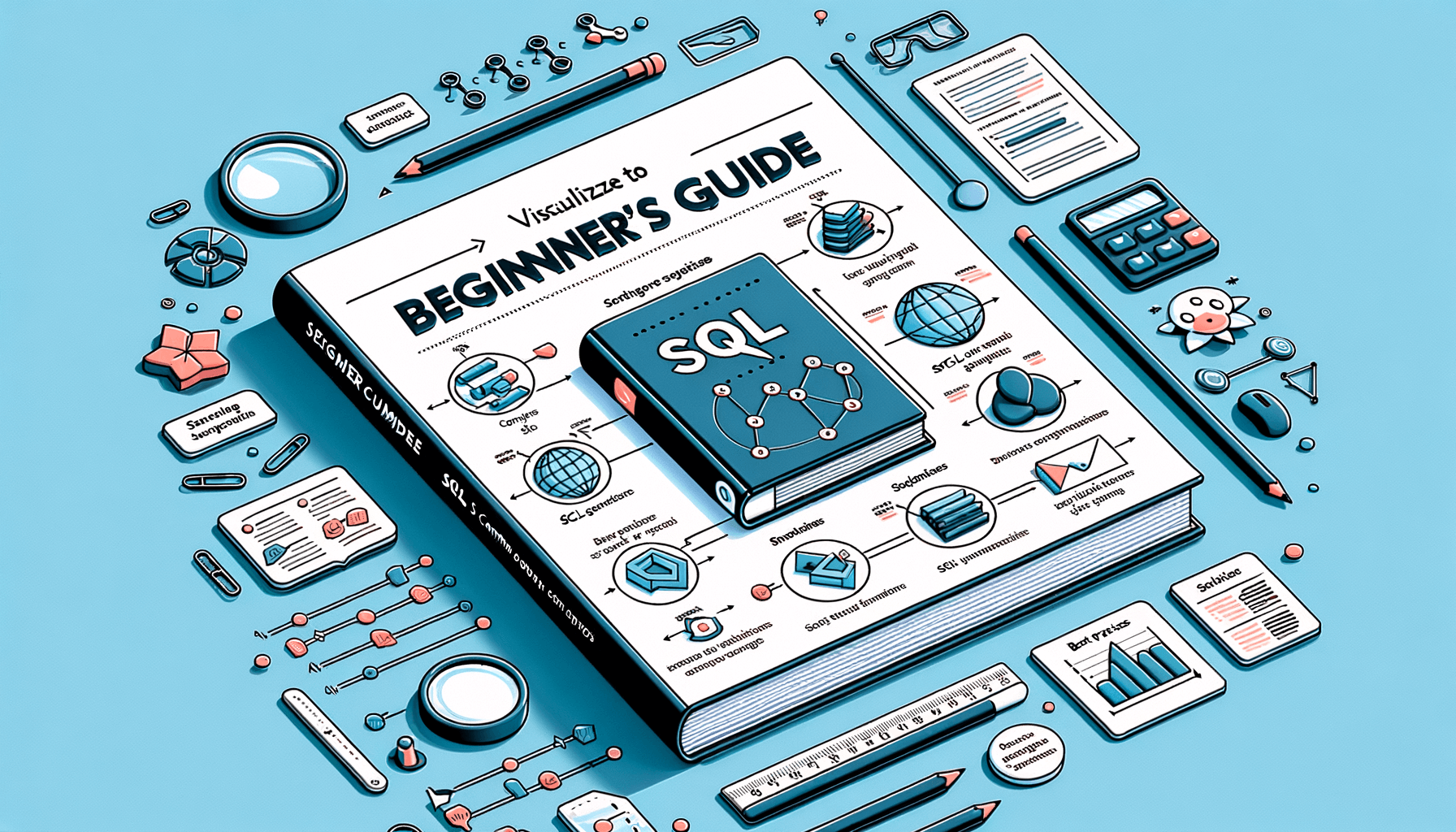A big variety of articles and resources

Mastering SQL: A Comprehensive Guide to Learning SQL for Data Analysis
 Sia Author and Instructor
Learn SQL
Sia Author and Instructor
Learn SQL
9 minute read
Foundations of SQL for Data Analysis
Understanding Databases and Tables
When it comes to SQL for data analysis, it is essential to understand the basic building blocks of any relational database, such as rows, columns, and tables. A table is the primary structure that stores data in a relational database. It consists of columns, which represent the different attributes of the data, and rows that store the actual records.
Setting Up Your SQL Environment
To start using SQL for data analysis, you need to set up your SQL environment. This involves installing a database management system (DBMS) like MySQL, PostgreSQL, or SQLite. Once installed, you can create databases and tables to store your data. Proper setup ensures smooth and efficient data analysis.
Basic SQL Queries
Basic SQL queries are the foundation of data analysis. These include SELECT, INSERT, UPDATE, and DELETE statements. With these commands, you can retrieve, add, modify, and remove data from your tables. Mastering these basic queries will greatly enhance your data analysis capabilities and efficiency.
Understanding these foundational elements of SQL is crucial for anyone looking to leverage SQL for data analysis. It sets the stage for more advanced techniques and ensures a solid grasp of how data is structured and manipulated in relational databases.
Advanced SQL Techniques for Data Analysis
Building upon foundational skills, this section delves into the sophisticated realms of SQL, unlocking techniques pivotal for in-depth data analysis and the extraction of nuanced insights. From the power of window functions to the strategic optimization of queries, we chart a path toward transforming raw data into predictive foresights.
Complex Joins and Relationships
Mastering complex joins and understanding relationships between tables is crucial for advanced data analysis. Complex joins allow you to combine data from multiple tables in meaningful ways, enabling deeper insights. Types of joins include inner joins, outer joins, and self-joins, each serving a unique purpose in data analysis.
Subqueries and Nested Queries
Subqueries and nested queries are powerful tools for breaking down complex problems into manageable parts. A subquery is a query within another query, and it can be used to perform operations that would be cumbersome or impossible with a single query. Using subqueries can help in filtering, transforming, and summarizing data more efficiently.
Window Functions
Window functions are essential for performing calculations across a set of table rows that are somehow related to the current row. Unlike aggregate functions, window functions do not cause rows to become grouped into a single output row. Instead, they maintain the individual rows while allowing for complex calculations like running totals, rankings, and moving averages.
Mastering these advanced SQL techniques allows you to work more efficiently with large datasets and uncover crucial insights that can drive business growth and impact.
Optimizing SQL Performance
Efficiency is paramount when dealing with large datasets, making the optimization of SQL queries a critical skill. The goal is to minimize execution time and resource consumption, ensuring swift, responsive data analysis. By following these optimization techniques, you can ensure that your SQL queries are efficient, and you’re able to extract valuable insights from the data quickly and confidently.
Data Cleaning and Preparation with SQL
Identifying and Handling Missing Data
One of the primary tasks in data analysis is data manipulation, where you need to retrieve, modify, and analyze the data stored in tables. SQL helps achieve this by providing various commands to filter, sort, and summarize the dataset effectively. Identifying and handling missing data is crucial for maintaining data integrity and accuracy.
Data Transformation Techniques
Refining SQL queries is an art that turns raw data into actionable insights. Here's how to master this art:
- Use CASE statements to create new columns based on conditions.
- Apply CAST and CONVERT functions to change data types.
- Utilize string functions like SUBSTRING and REPLACE for text manipulation.
Using SQL for Data Validation
The Data Manipulation Language (DML) is another subset of SQL which enables the user to query information from the database and to insert new data, delete irrelevant data, and update existing data. With DML, you can ensure data validation by:
- Using constraints like CHECK and UNIQUE to enforce data rules.
- Implementing triggers to automate validation processes.
- Applying JOIN operations to cross-verify data across multiple tables.
Data validation is essential for ensuring the accuracy and reliability of your dataset, making it a cornerstone of effective data analysis.
Real-World Applications of SQL in Data Analysis
Case Studies and Examples
SQL's application in data science is vast and varied, touching upon industries from healthcare to e-commerce. It plays a crucial role in data analysis, reporting, and ultimately, in driving strategic business decisions.
SQL in Business Intelligence
SQL databases support complex queries and transactions, making them indispensable for scenarios requiring detailed data analysis and reporting. Their structured nature facilitates a clear schema definition, which is crucial for data integrity and reliability in predictive analytics.
SQL for Predictive Analytics
Data analysis is a critical aspect of many industries today, helping organizations make data-driven decisions and derive valuable insights from their data. SQL is a powerful tool that data professionals use to interact with databases and conduct thorough data analysis. It is imperative for anyone looking to excel in data analysis or data science fields to have a strong grasp of SQL and its various applications.
SQL is an incredibly powerful tool for data analysis. It allows interaction with data stored in relational databases, performing complex queries, and even applying mathematical functions to analyze the records. Using SQL for data analysis greatly improves both the efficiency and accuracy of work.
Best Practices for Learning SQL
Effective Learning Resources
To discover the best way to learn SQL fast, start with basics, stay consistent, and prioritize hands-on experience. Interactive online courses are highly effective for practical application. Look for SQL courses that offer comprehensive coverage of essential topics such as database design, querying, normalization, and optimization. Ensure that the course curriculum is up-to-date and relevant to industry standards, providing you with practical skills that you can apply in real-world scenarios.
Building Practical Projects
Hands-on practice is crucial for mastering SQL. Engage in projects that require you to work with real datasets. This not only reinforces your learning but also helps you understand how SQL is used in real-world scenarios. Consider participating in SQL challenges on websites like HackerRank and LeetCode, which range from beginner to advanced levels, helping you sharpen your query writing skills.
Joining SQL Communities
Engaging with community forums can provide insights into real-world problems and innovative solutions. Join SQL forums such as Stack Overflow or Reddit's SQL community. Additionally, teaching SQL concepts to others can reinforce your understanding and skills. Networking with other SQL learners and professionals can also open up opportunities for collaboration and learning.
Continuous learning and practice are pivotal in keeping up with the evolving SQL landscape. Enroll in online courses, participate in SQL challenges, and regularly update your knowledge base to stay ahead.
Leveraging SQL for Career Advancement
Mastering SQL is not just about understanding its syntax or being able to perform complex queries. It's about ongoing growth, showcasing your skills, and building a network that supports your career trajectory. This section delves into practical strategies to not only enhance your SQL prowess but also to leverage it for substantial career advancement in the field of data science.
Leveraging SQL for Career Advancement can open numerous doors in the tech industry. Our comprehensive courses are designed to help you master SQL and other advanced technologies, ensuring you stay ahead in your career. Don't miss out on this opportunity to enhance your skills and boost your career prospects. Visit our website to learn more about our courses and how we can help you achieve your goals!
Conclusion
Mastering SQL is an essential skill for anyone involved in data analysis and data science. This comprehensive guide has walked you through the fundamental concepts and advanced techniques of SQL, providing you with the tools needed to query, manipulate, and analyze data effectively. Whether you are a beginner or an experienced professional, the strategies and insights shared in this guide will help you enhance your SQL proficiency and apply it to real-world data challenges. As you continue to practice and refine your skills, you will find that SQL becomes an invaluable asset in your data toolkit, enabling you to unlock deeper insights and drive data-driven decision-making in your career. Happy querying!
Frequently Asked Questions
What is SQL and why is it important for data analysis?
SQL, or Structured Query Language, is a programming language used to manage and manipulate relational databases. It is essential for data analysis because it allows data professionals to query, filter, and analyze data efficiently, enabling insightful decision-making.
How can I set up my SQL environment?
Setting up your SQL environment involves installing a database management system (DBMS) such as MySQL, PostgreSQL, or SQLite. You will also need a client to interact with the DBMS, such as MySQL Workbench or pgAdmin.
What are some basic SQL queries I should know?
Some basic SQL queries include SELECT, INSERT, UPDATE, and DELETE. These commands allow you to retrieve, add, modify, and remove data from a database, respectively.
What are complex joins and why are they important?
Complex joins, such as INNER JOIN, LEFT JOIN, RIGHT JOIN, and FULL JOIN, are used to combine rows from two or more tables based on related columns. They are important for retrieving comprehensive data from multiple tables, which is crucial for in-depth analysis.
How can I optimize SQL queries for better performance?
Optimizing SQL queries can be achieved through indexing strategies, query optimization techniques like using EXPLAIN plans, and avoiding unnecessary columns in SELECT statements. These practices help in reducing query execution time and improving performance.
What are some effective resources for learning SQL?
Effective resources for learning SQL include online courses on platforms like Coursera, edX, and Udemy, SQL textbooks, interactive websites like SQLZoo and LeetCode, and joining SQL communities and forums for peer support and knowledge sharing.




